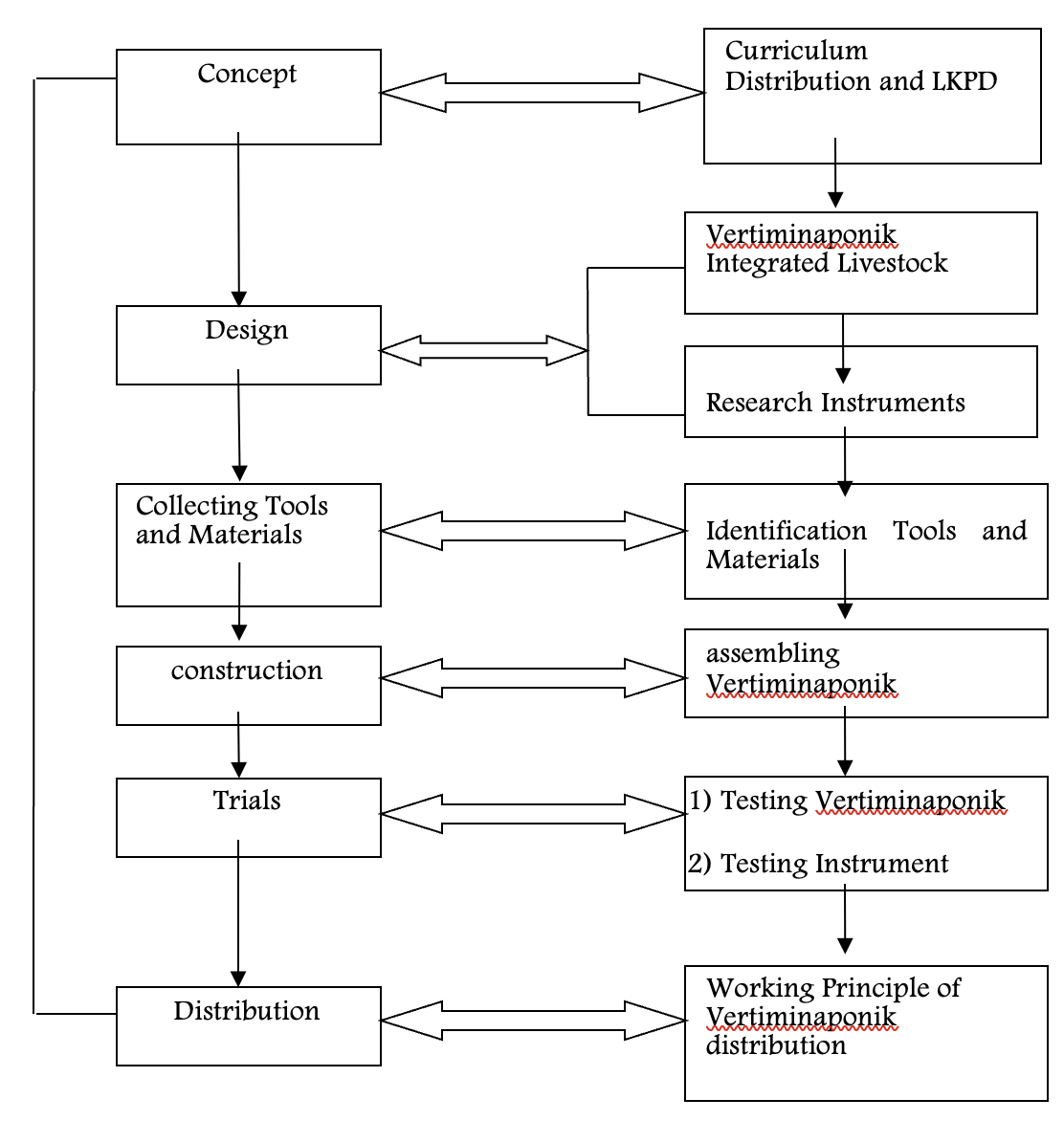The Development of Vertiminaponik Learning Tool Integrated Livestock For Enhancing Student Creative Thinking Skills in Biology learning
Main Article Content
Abstract
One of the skills that must be possessed by students is creative thinking skills that are oriented towards the ability of students to think metaphorically. To support this in Biology learning, innovative learning media are needed, namely vertiminaponik learning media which are learning media that integrate plant, livestock, and fish cultivation that direct students to understand each related material. This research is the development or Research and Development (R & D). Development models used in this research is the development of ADDIE model. This model consists of six stages of activity, namely: 1) concept analaysis, 2) design, 3) the collection of material, 4) development, 5) implementation, and 6) evaluation. The purpose of this study was to produce a learning tool vertiminaponik that are valid, practical and effective. Assessment instrument consisting of three, namely: a) the instrument validity in the form of an assessment instrument validity learning tool vertiminaponik integrated livestock and assessment instruments validity of worksheets learners b) Instruments practicality in the form of an assessment instrument practicality and c) assessment instruments effectiveness learning tool vertiminaponik. Practicality Vertiminaponik based learning tool development obtained high category. Previously, validity and reliability tests were carried out on the questionnaire consisting of several sub-indicators covering the components of the vertiminaponik learning media to determine the effectiveness and practicality of the media, and each component of the instrument was measured using the product moment test in the SPSS application. Based on the results of this study concluded that a learning tool vertiminaponik terintegrsi farms are valid, practical and effective.
Article Details

This work is licensed under a Creative Commons Attribution-ShareAlike 4.0 International License.
References
Aldahmash, A. H., & Omar, S. H. (2021). Analysis of activities included in Saudi Arabian chemistry textbooks for the inclusion of argumentation-driven inquiry skills. Studies in Educational Evaluation, 68(July 2020), 100968. https://doi.org/10.1016/j.stueduc.2020.100968
Behnamnia, N., Kamsin, A., Ismail, M. A. B., & Hayati, A. (2020). The effective components of creativity in digital game-based learning among young children: A case study. Children and Youth Services Review, 116(July), 105227. https://doi.org/10.1016/j.childyouth.2020.105227
Goodyear, V. A., & Armour, K. M. (2021). Young People’s health-related learning through social media: What do teachers need to know? Teaching and Teacher Education, 102, 103340. https://doi.org/10.1016/j.tate.2021.103340
Hammershøj, L. G. (2021). Creativity in children as play and humour: Indicators of affective processes of creativity. Thinking Skills and Creativity, 39(August 2020), 1–10. https://doi.org/10.1016/j.tsc.2020.100784
Irawan, F. (2023). Media pembeljaran Vertiminaponik. In indonesia (Vol. 11, Issue 1). http://scioteca.caf.com/bitstream/handle/123456789/1091/RED2017-Eng-8ene.pdf?sequence=12&isAllowed=y%0Ahttp://dx.doi.org/10.1016/j.regsciurbeco.2008.06.005%0Ahttps://www.researchgate.net/publication/305320484_SISTEM_PEMBETUNGAN_TERPUSAT_STRATEGI_MELESTARI
Irawan, F. (2024). BIOCHEPHY : Journal of Science Education. Academia.Edu, 02(1), 1–4. https://doi.org/10.52562/biochephy.v4i1.1066
Irawan, F., Adawiyah, R., Zubaidah, S., & Arsih, F. (2023). Scientific Literacy and Communication Skills a-re Significant for Enhancing Students’ Creative Thinking Skills. AIP Conference Proceedings, 2569(January). https://doi.org/10.1063/5.0112412
Irawan, F., Maghfiroh, H., Zubaidah, S., & Sulisetijono, S. (2024). The correlation between science literacy skills and scientific explanation on creative thinking skills through Remap-STAD learning model. AIP Conference Proceedings, 3106(1). https://doi.org/10.1063/5.0215201
Marrero-Rodríguez, N., García-Romero, L., Hernández-Cordero, A. I., Peña-Alonso, C., & Pérez-Chacón Espino, E. (2022). Deforestation by historical lime industry in an arid aeolian sedimentary system: An applied and methodological research. Science of the Total Environment, 819. https://doi.org/10.1016/j.scitotenv.2021.152009
Ningsi, S., Suhandi, A., Kaniawati, I., & Samsudin, A. (2019). KTG-SESC: Development of scientific explanation skills test instrument. Journal of Physics: Conference Series, 1157(3). https://doi.org/10.1088/1742-6596/1157/3/032050
Park, S., & Antonio, K. (2021). The Arts in Psychotherapy Globalization in art therapy education : Multicultural training in South Korean context. The Arts in Psychotherapy, 72(December 2020), 101742. https://doi.org/10.1016/j.aip.2020.101742
Putra, D. J., & Rahman, Z. (2019). The role of guidance and counseling teacher in solving students’learning difficulties in physics. Journal of Physics: Conference Series, 1321(3). https://doi.org/10.1088/1742-6596/1321/3/032056
Saenab, S., Zubaidah, S., Mahanal, S., & Lestari, S. R. (2021). Recode to re-code: An instructional model to accelerate students’ critical thinking skills. Education Sciences, 11(1), 1–14. https://doi.org/10.3390/EDUCSCI11010002
Tari, E., Hendrik, A. ., & Liufeto, M. C. (2022). Kesiapan Sekolah Dalam Menerapkan Kurikulum Merdeka di Rote Ndao. Jurnal Pendidikan Dan Konseling, 4(6), 1707–1715.
Thahery, R., & Mahaputra Riau, S. (2023). Implementasi Kurikulum Merdeka Belajar Kampus Merdeka Dalam Menghadapi Era Society 5.0. Technical and Vacational Education International Journal Februari 2023, 3(1), 2721–9798.
Wolfowicz, M., Perry, S., Hasisi, B., & Weisburd, D. (2021). Faces of radicalism: Differentiating between violent and non-violent radicals by their social media profiles. Computers in Human Behavior, 116(November 2020), 106646. https://doi.org/10.1016/j.chb.2020.106646

